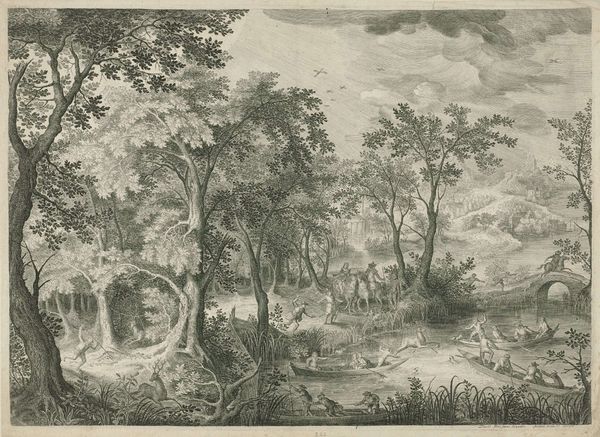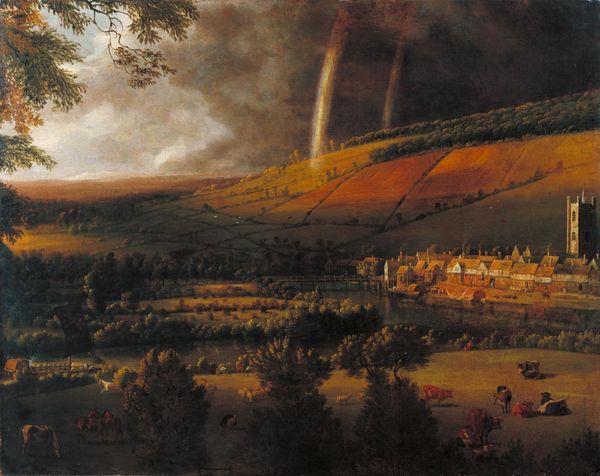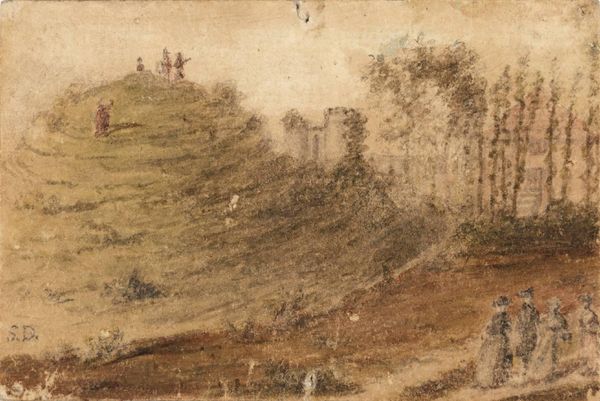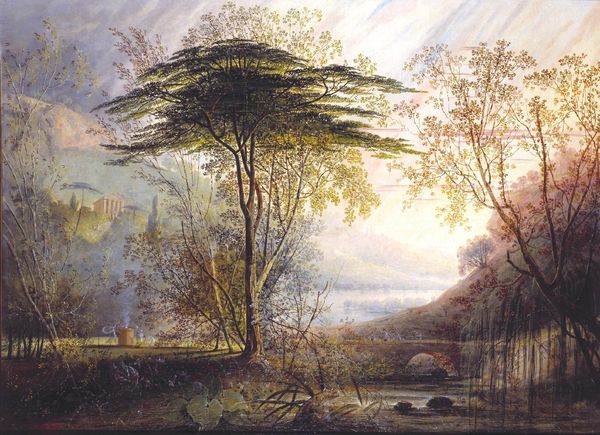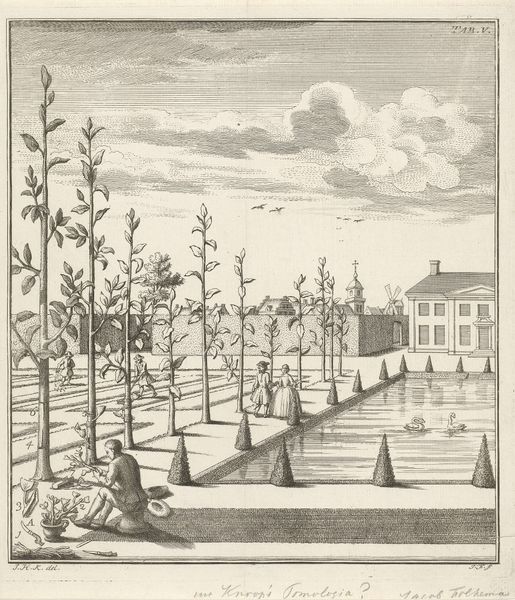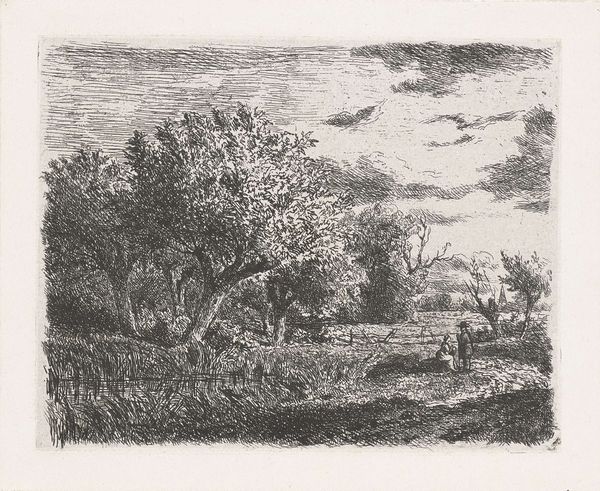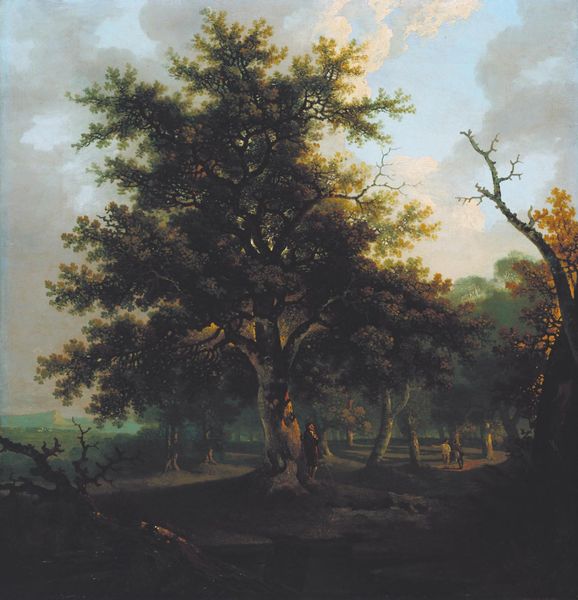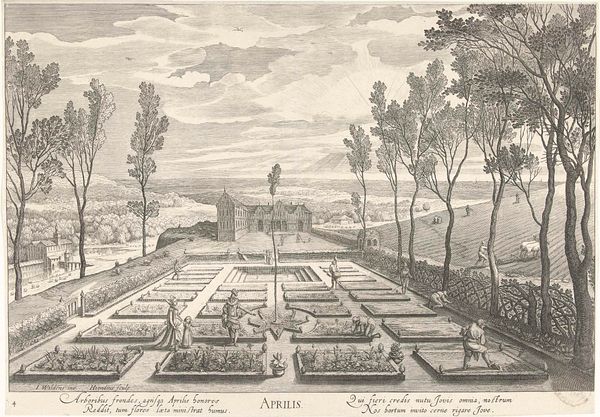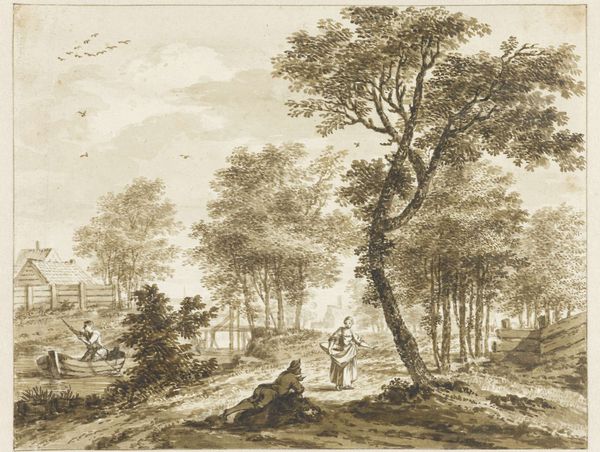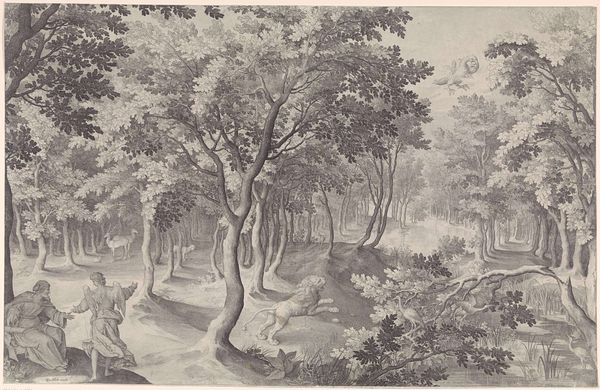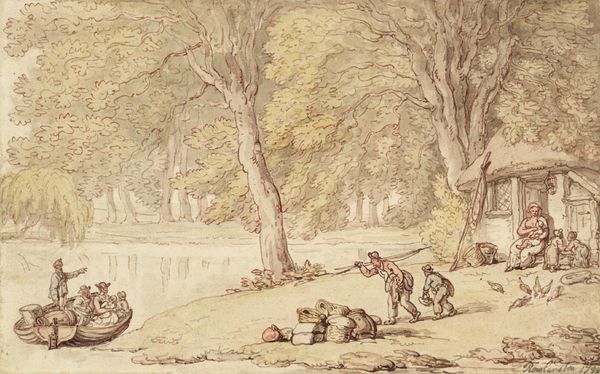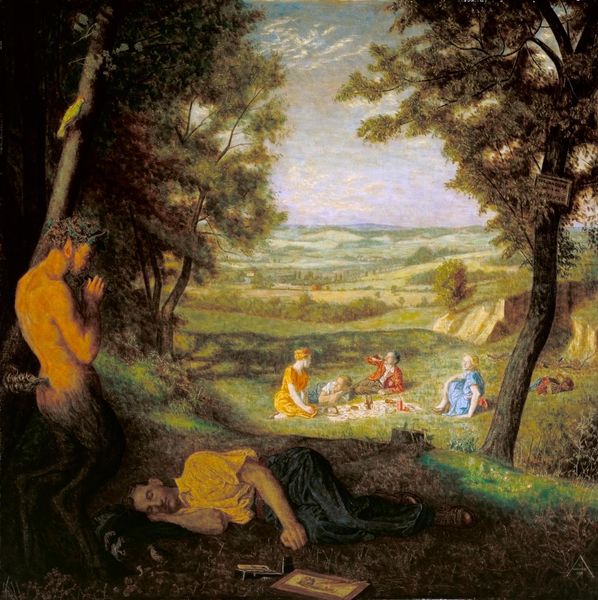
painting, plein-air, oil-paint
#
neoclacissism
#
painting
#
plein-air
#
oil-paint
#
landscape
#
oil painting
#
realism
Copyright: Public domain
Editor: We’re looking at Charles Willson Peale's "Cabbage Patch, The Gardens of Belfield, Pennsylvania" from 1816, an oil-on-canvas painting depicting a garden scene. There’s a formal quality to the layout, and an abundance of cabbages, but somehow it feels… constrained. What do you see in this piece beyond a simple landscape? Curator: It’s a fascinating depiction, especially considering the period. Think about what land represented at this time: ownership, power, and particularly, who was excluded from that ownership. Peale’s detailed rendering of the garden, almost scientific in its precision, points to a controlled, cultivated space. But who is doing the cultivating? What are the power dynamics embedded in this idealized image of domesticity? Editor: So, it's not just a pretty picture; it's a statement about land and labor? Curator: Precisely. Consider the legacy of colonialism and enslaved labor that underpins even the most idyllic landscapes of this era. How complicit are these paintings in perpetuating a romanticized and skewed vision of reality? We have to acknowledge those hidden stories, the untold narratives of the people whose labor literally made these gardens, and this lifestyle, possible. Editor: That reframes it entirely. It makes you question what Peale chose to show, and, perhaps more importantly, what he left out. Curator: Exactly. By looking at the painting through this lens, we start to excavate its layered meanings, to question its seeming innocence. The painting prompts us to contemplate how aesthetics and politics are interwoven, and it underscores the importance of broadening our perspective when engaging with art history. Editor: I’ll never look at a cabbage patch the same way again. It's more than just veggies; it’s a landscape of power. Curator: Indeed, it is. Hopefully it illustrates how even seemingly simple works can provoke really complex questions.
Comments
No comments
Be the first to comment and join the conversation on the ultimate creative platform.
